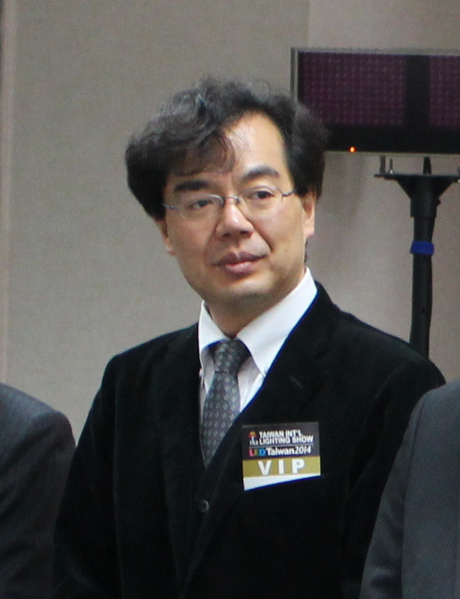OLED technology might lag behind LED in terms of luminous efficacy and affordability, but technology advancements are shortening the gap between the contesting technologies, according to lighting experts at Taiwan and Japan Lighting Industry Forum at Taiwan International Lighting Show (TILS) 2014 at Taiwan World Trade Center Nangang Exhibition Hall, Taipei, Taiwan.
 |
|
Yasuki Kawashima, Manager, SSL Application Engineering and Development Department, NEC Lighting during a group photo shot at the Taiwan and Japan Lighting Industry Forum at TILS 2014. (LEDinside) |
NEC OLED panels for instance will reach a luminous efficacy of 75-85 lm/W by 2014, while Konica Minolta and Panasonic are estimated to reach 100 lm/W this year, said Yasuki Kawashima, Manager, SSL Application Engineering and Development Department, NEC Lighting. In comparison, LED is expected to reach 160 lm/W efficacy in 2014. However, OLED luminous efficacy is projected to catch up with LED sometime in 2025. This is made possible as LED luminous efficacy growth declines, while OLED technological breakthroughs keeps it under high growth.
The difficulty for OLED remains in luminous efficacy, as up to 80 percent of light is trapped in layered structures, only 20 percent of light is successfully released to the air, said Kawashima. The layer structures consists of different materials that have various reflective properties, which makes light extractive technologies fairly important. Light extractive technology, known as out-coupling has become a major focus in Japan.
While LED might be winning the battle on the affordability front for now, Kawashima projected technological breakthroughs will bring down OLED prices in the next three to five years. OLED currently has an insignificant market penetration rate of four to five percent in the Japanese market, even though applications are expanding in architecture and design industry.





 CN
TW
EN
CN
TW
EN





